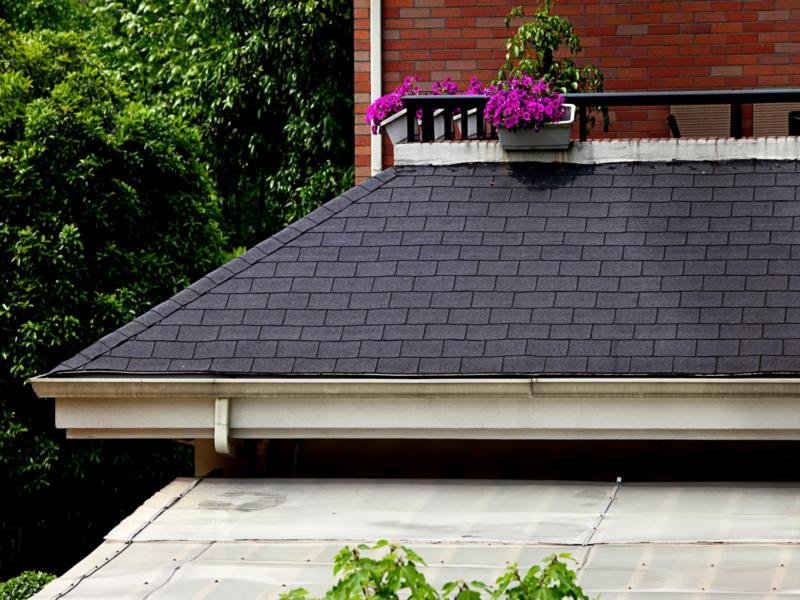Asphalt shingles are a popular roofing material, but some people criticize them for issues like detachment or fading. These problems often stem from improper installation or material selection during the construction process. Fortunately, with proper techniques and materials, these issues can be avoided. Below, we outline the main problems associated with asphalt shingles and their solutions.

1. Asphalt Shingles Being Blown Off: Causes and Solutions
Asphalt shingles are less likely to be blown off on low-rise buildings (two to three stories) or roofs with slopes under 45°. However, detachment is more common in high-rise buildings (five to six stories or higher), on roofs with slopes exceeding 45°, particularly near the ridge (within one meter) or along the eaves, especially on northwest- or northeast-facing roofs. The reasons for this issue include:
- Sensitivity to Construction Season: Asphalt shingles are typically secured using a combination of nails and self-adhesive strips. During winter, especially with single-layer shingles, the self-adhesive strip may not activate due to low temperatures. Since single-layer shingles are thinner, lighter, and less tear-resistant, they rely heavily on nails for stability. If strong winds blow, exposed sections may detach. In northern regions, spring sandstorms (March and April) can blow dust under the shingles, contaminating the adhesive and reducing its effectiveness, leading to repeated lifting and eventual detachment. In southern regions, winter northwest winds can similarly dislodge shingles if the adhesive hasn’t set. In coastal areas, typhoons can blow off shingles if the adhesive hasn’t fully bonded.
- Substandard Nail-Holding Layer: In some cases, the nail-holding layer (e.g., concrete base) is of poor quality. Issues include low-grade cement mortar, frozen roof surfaces, insufficient thickness of the nail-holding layer on insulation boards, poor compaction, large-scale cracking, or delamination at edges. These lead to loose nails, which can shift when walked on or be lifted by strong winds, causing shingles to detach.
- Improper Installation Practices: Inspections often reveal that installers miss nails, use too few nails, or place them incorrectly, leading to shingle detachment. In some cases, nails are not fully driven in, leaving the nail head separating the adhesive from the shingle, preventing proper bonding and allowing wind to dislodge the shingle.
- Poor Product Quality: Substandard adhesive properties (e.g., insufficient stickiness, thickness, or width) or inadequate shingle thickness and weight can contribute to detachment.
- Weak Wooden Substrates: Wooden roof substrates with low rigidity can vibrate under strong winds, loosening nails and detaching the adhesive, causing shingles to fall off.
Solutions:
- Use high-quality shingles with reliable adhesive properties and adequate thickness.
- Ensure proper nail placement and quantity during installation, following industry standards.
- Verify the quality and thickness of the nail-holding layer, ensuring proper compaction and no cracking.
- Schedule installation during optimal weather conditions to allow the adhesive to set properly.
- For wooden roofs, reinforce the substrate to improve rigidity.
2. Fading, Discoloration, or Sand Loss: Causes and Solutions
Issue: In earlier years, unstable colored sand quality and improper asphalt mixture ratios led to significant fading, discoloration, or sand loss in asphalt shingles, issues that persist in some cases today.
Solutions:
- Colored Sand Manufacturers: Strictly control the quality of raw sand, minimize dust content, select high-strength mineral sand, and adhere to production standards.
- Shingle Manufacturers: Ensure proper embedding of colored sand on the shingle surface to minimize sand loss. Enhance the bonding strength of the asphalt mixture to prevent sand detachment.
By addressing these issues through proper material selection, improved manufacturing processes, and meticulous installation practices, asphalt shingles can deliver reliable performance and longevity, making them a trusted choice for modern roofing projects.
